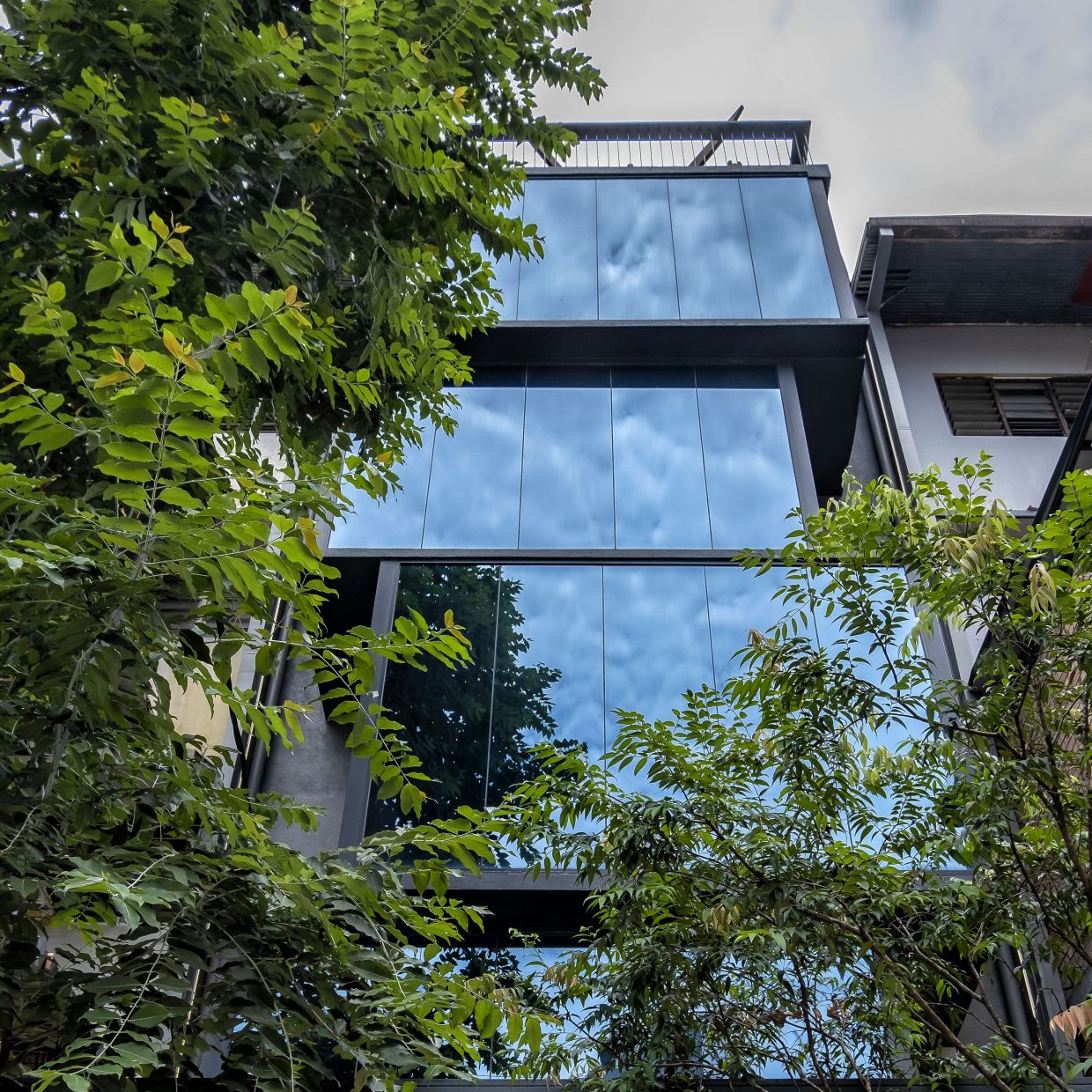The staggered glazed cubic facade at Ur-Mu. Photos: H.LINHO
Sitting on a land size of just 150sq m, nestled amidst an old residential area of Kuala Lumpur, is a building that clearly stands out from its more down-to-earth neighbours.
Sporting a modern glazed design, the Urban Museum or Ur-Mu – located at Jalan Bedara – is a purpose-built contemporary art museum that features selected artworks and eclectic objects from the collection of a private art patron.
The museum features over 100 artworks by artists mainly from Malaysia as well as the surrounding region.
The work of transforming the modernist 1950s four-storey walk-up apartment – located in one of the last remaining residential areas in the Golden Triangle – was undertaken by Dr Tan Loke Mun from DRTAN LM Architect.
"Ur-Mu was designed as a private art museum to promote Malaysian and regional art. I hold the view that a bankrupt nation is devoid of good art and architecture, and Kuala Lumpur as the capital city of modern Malaysia was in need of more venues to avoid that,” said Tan.
"Ur-Mu is located in a residential area in the very heart of the city centre. The existing building was an apartment block that was in a very run-down condition. The new building design is modern whilst maintaining the scale (the size of the building relative to the buildings or elements around it) and streetscape. It is hoped that this will encourage further urban regeneration of the area,” he added.
The original building contained eight two-bedroom flats and while the existing layout was retained, additions in the form of a lobby, roof-top garden, lift, washroom for the disabled and a new façade were made.
And it is this exterior – a modern, staggered glazed cubic form complemented by an industrial steel and red brick entry – that gives the building an aesthetic edge.
"The cubic facade wraps and encloses the existing balconies to protect the artworks in the museum. The staggering of the cubes breaks up the verticality and helps maintain the scale of the streetscape with its many balconies,” said Tan.
"Resilience is an important part of our design philosophy, so the raw brickwork provides for easy maintenance. The use of raw and natural materials has long been a part of our architectural design palette, and we have been able to blend it well with modern steel and glass,” said Tan.
With a build-up of 545.5sq m, Ur-Mu opened its doors to the public in May 2022. An unconventional greeting in the form of a Banksy welcome mat on the ceiling greets visitors entering the ground floor lobby.
Inside, sculptures and artworks are displayed along the wall of a sky-lit ceiling in accordance with Romanian sculptor and painter Constantin Brancuși’s concept of spatial arrangements where “mobile groups” are created regularly by rearranging the sculptures on display to demonstrate spatial relationships and to emphasise the interconnectivity of the pieces.
Making a statement on the rooftop terrace is a specially commissioned outdoor sculpture by Abdul Multhalib Musa titled Wing It! The large-scale sculpture complements the city skyline – which includes a spectacular view of the Kuala Lumpur Tower – and the bohemian neighbourhood below.
The rooftop garden is named “Made’s Garden”, adopting Made Wijaya’s design philosophy of “embracing architectural ideals and the splendour of tropical flora coupled with breathtaking views that constitute the success of Balinese gardens”.
"There is always a lack of green spaces in the city centre. The rooftop gardens provide a surprising finale for visitors to Ur-Mu. In addition, the trees and shrubs offer resting places for birds and butterflies and also help reduce the heat island effect,” said Tan.
The interior part of the rooftop, known as the "Sculpture Lounge”, houses an eclectic selection of freestanding three-dimensional artworks, wall sculptures and two-dimensional artworks.
"Adaptive reuse involves creating a new use for the old which, in this case, was to set up a private art museum. Urban regeneration often starts from one humble project.
"Ur-Mu is a simple example of how other old buildings can be transformed for new uses and benefit the life of the city,” he said.















